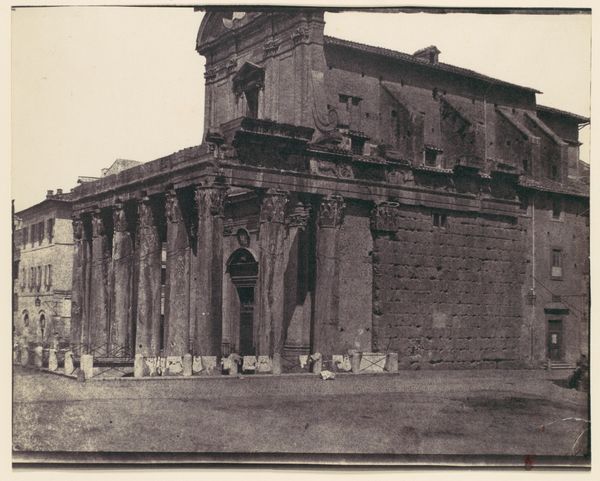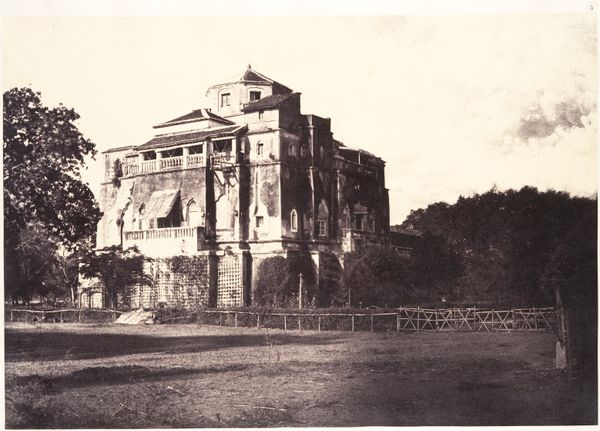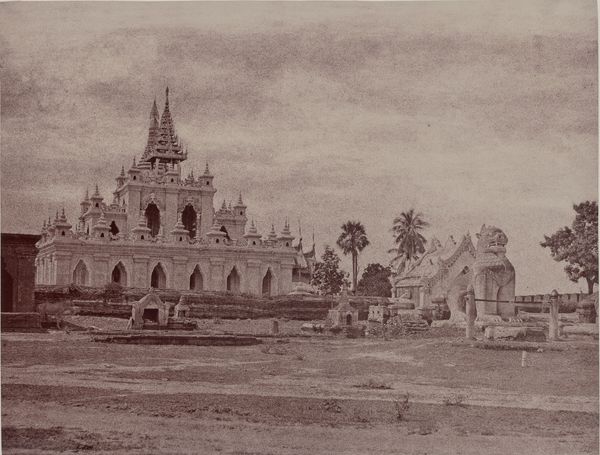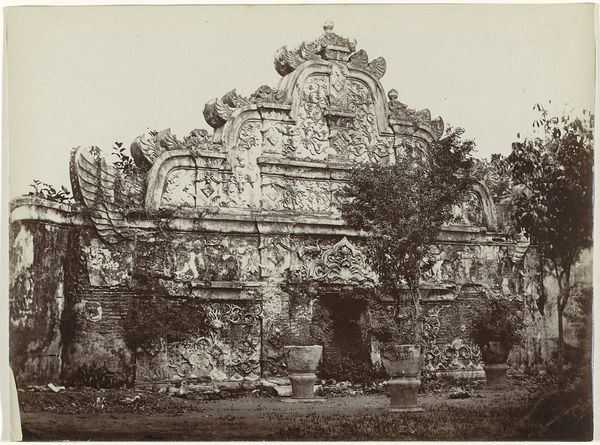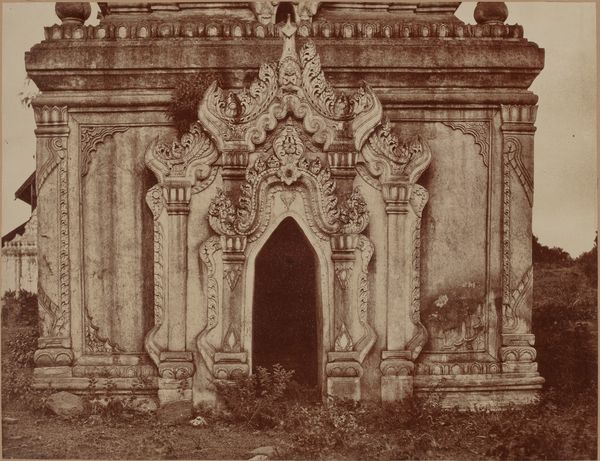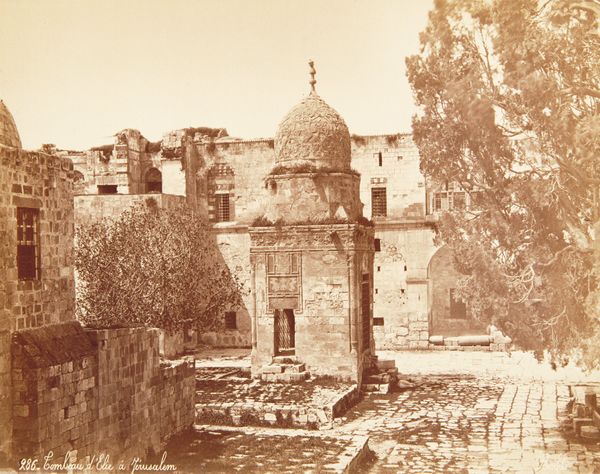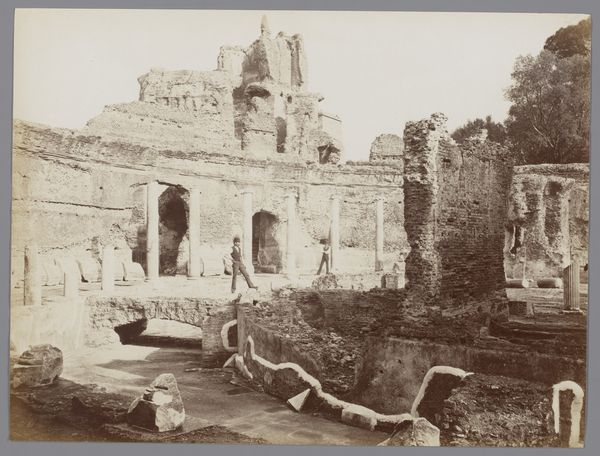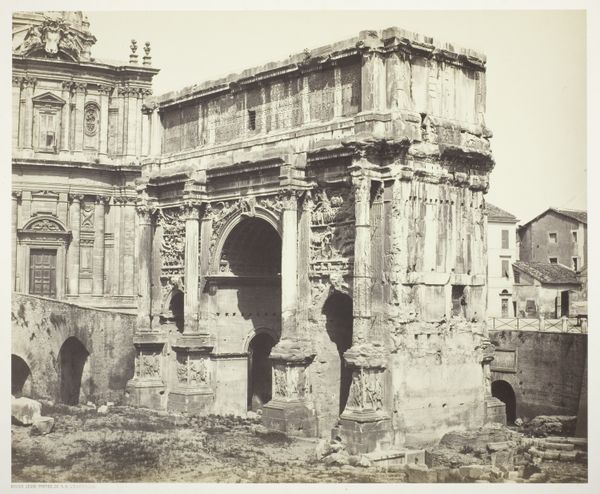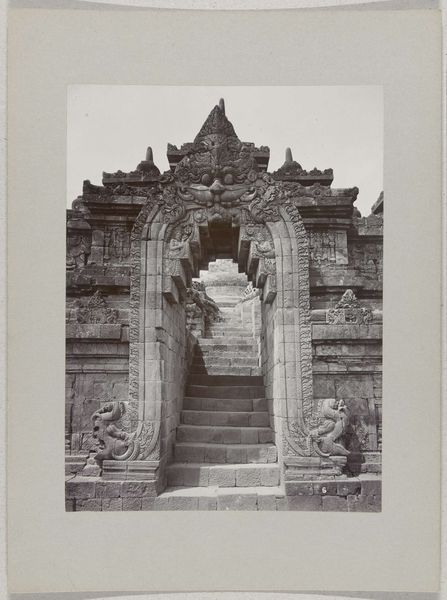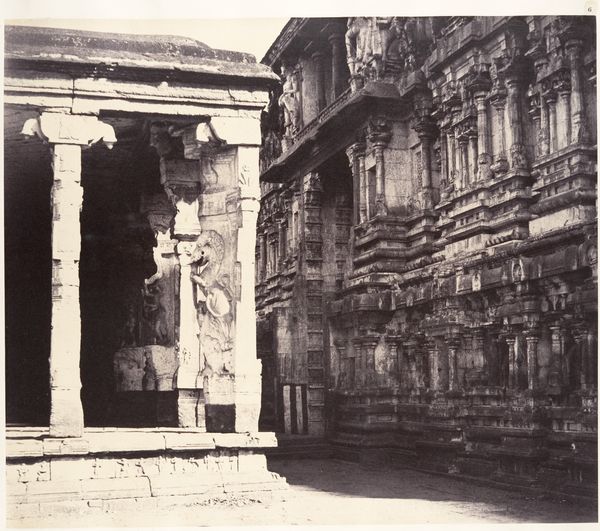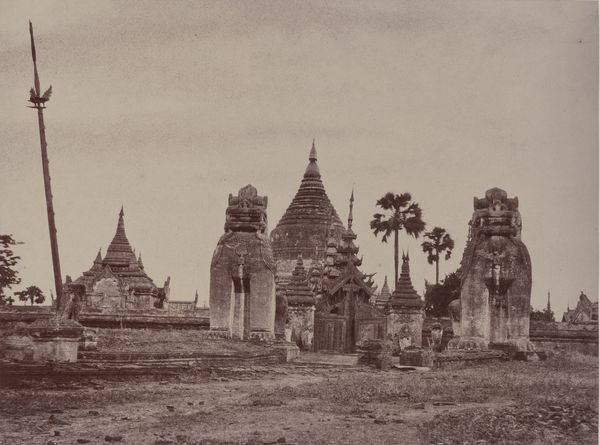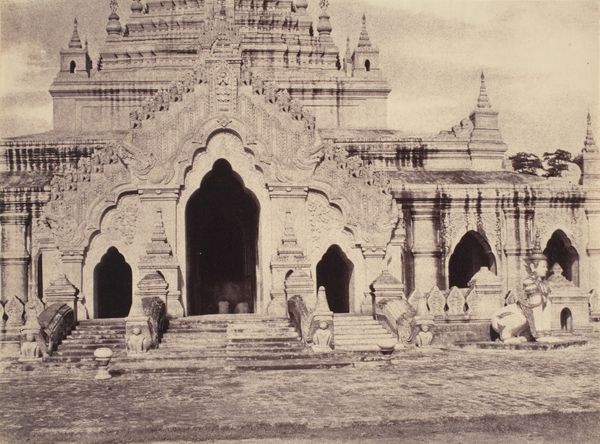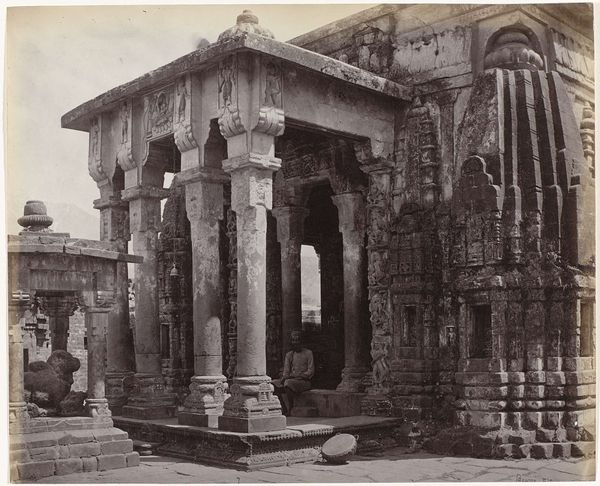
print, photography, architecture
#
black and white photography
# print
#
landscape
#
historic architecture
#
photography
#
geometric
#
ancient-mediterranean
#
monochrome photography
#
19th century
#
architecture
#
historical building
#
monochrome
Dimensions: image: 26.5 × 34.3 cm (10 7/16 × 13 1/2 in.) mount: 45.6 × 58.3 cm (17 15/16 × 22 15/16 in.)
Copyright: National Gallery of Art: CC0 1.0
Linnaeus Tripe made this photograph of the East Facade of Damayangyee Pagoda using the albumen silver process. The image shows the imposing scale and architectural complexity of the pagoda, with its towering structure and intricate details. Tripe was commissioned to document the region by the British East India Company. Photography like this served imperial interests, creating a visual record of the landscape and monuments of Burma, now Myanmar. The pagoda itself is a testament to the religious and cultural traditions of the region. Built in the 12th century, it reflects the architectural styles and artistic conventions of the Bagan period. The monument's imposing presence speaks to the power of religious institutions in shaping social life. To understand the photograph, we can look into the archives of the East India Company, travelogues from the period, and studies of Burmese architecture and religious practices. That kind of historical research lets us appreciate how art is deeply embedded in its social and institutional context.
Comments
No comments
Be the first to comment and join the conversation on the ultimate creative platform.

